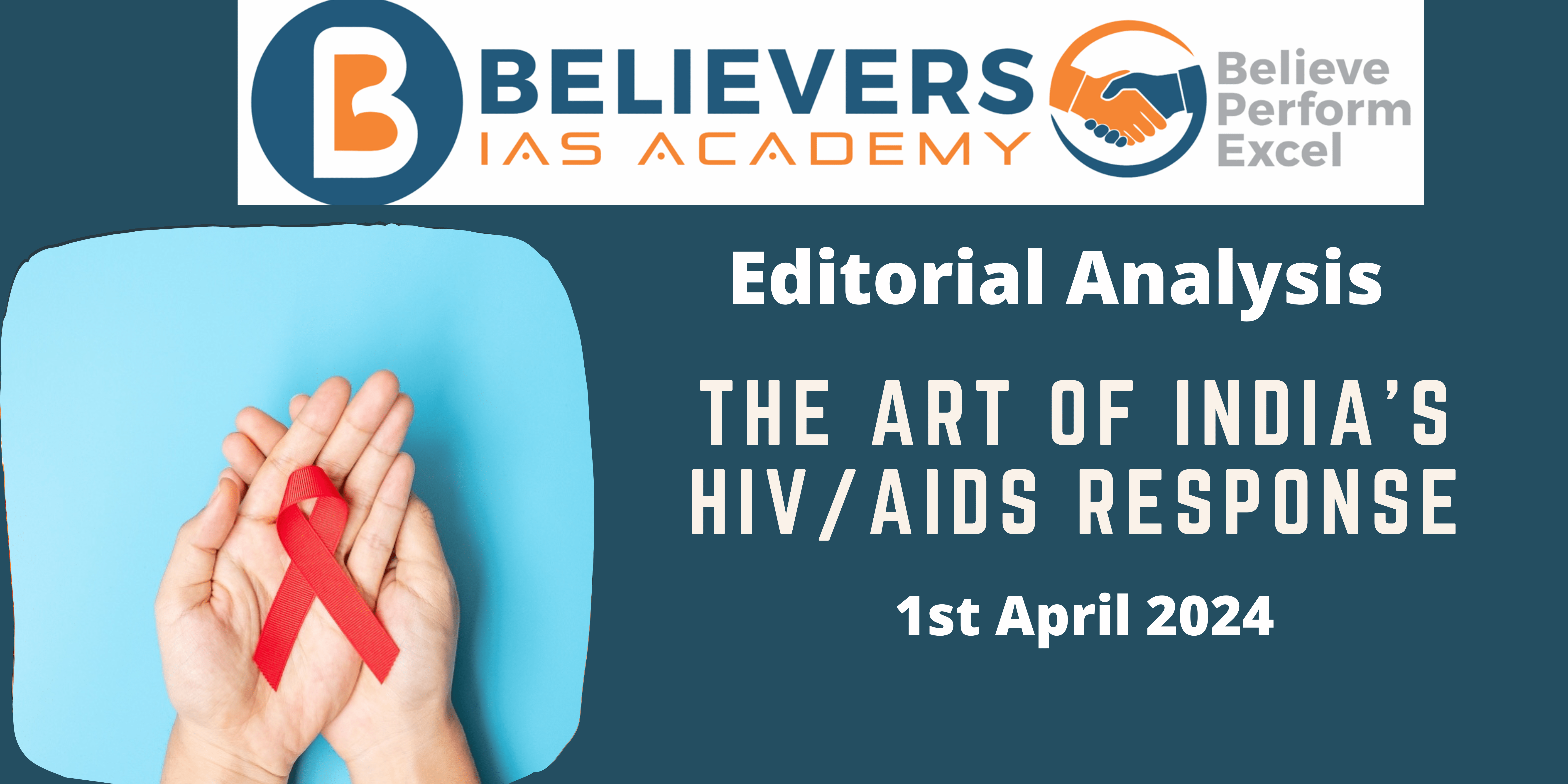The ART of India’s HIV/AIDS response
Context:
April 1st commemorates the 20th anniversary of the Free Antiretroviral Therapy (ART) programme of India’s battle against HIV/AIDS. This decision which was aimed at providing free ART to Persons Living with HIV (PLHIV) was a pivotal intervention in combating the epidemic.
Relevance:
GS-02 (Health)
Facts for Prelims:
- Leukemia is a blood cancer caused by a rise in the number of white blood cells in the body.
- AIDS is a set of symptoms or syndrome caused by HIV. But it isn’t necessary that a person infected with HIV will definitely develop AIDS.
- HIV attacks CD4, a type of White Blood Cell (T cells) in the body’s immune system.
Dimensions of the Article:
- Importance of Free ART Programme
- The Human Immunodeficiency Virus (HIV)
- Impact and Success of Free ART
- Complementary Initiatives and Patient-Centric Approach
- Challenges and the Road Ahead
Importance of Free ART Programme:
- The emergence of HIV/AIDS in the 1980’s with very limited options of treatment available only for high-income countries was met with fear and stigma.
- But the antiretroviral drugs being very expensive, its affordability remained a significant global hurdle.
- The launch of Free ART Programme in India was to address this challenge. It provided for free treatment to PLHIV, regardless of their economic status.
- This initiative aimed to ensure access to life-saving medication and halt the transmission of the virus.
The Human Immunodeficiency Virus (HIV):
- Human Immunodeficiency Virus (HIV) is a virus that targets CD4, a type of white blood cell (T cells) responsible for detecting anomalies and infections in the body’s immune system.
- Upon entering the body, HIV replicates and destroys CD4 cells, severely compromising the immune system.
- Once contracted, HIV remains in the body indefinitely, leading to a significant reduction in CD4 count.
- In healthy individuals, CD4 count ranges between 500-1600, whereas in infected individuals, it can plummet to as low as 200.
- Stem cells are specialized cells capable of self-renewal and differentiation into various cell types required by the body. They possess two unique properties: the ability to divide repeatedly to generate new cells and the capacity to transform into different cell types as needed. Stem cells exist in different forms throughout the body and play crucial roles in tissue regeneration and repair. However, cancer and its treatments can damage hematopoietic stem cells, which are responsible for producing blood cells.
- Symptoms: Once HIV converts into AIDS , the symptoms are unexplained fatigue, fever, sores around genitals or neck, pneumonia etc.
Impact and Success of Free ART:
- Free ART Programme has been successful over two decades.
- With the number of PLHIV receiving treatment increasing significantly from 7,000 PLHIV on ART in 2004, the programme now serves approximately 1.8 million individuals across 700 ART centres.
- The availability of free ART has not only improved the health outcomes of PLHIV but also contributed to a decline in HIV prevalence and transmission rates.
- By the end of 2023, India’s share in global PLHIV had reduced to 6.3%, with significant declines in new HIV infections and AIDS-related mortalities.
Complementary Initiatives and Patient-Centric Approach:
- In addition to free ART, several complementary initiatives, such as free diagnostic facilities and prevention services, have played a crucial role in combating the epidemic.
- The programme has demonstrated flexibility and evolution over time, adopting policies like ‘Treat All’ approach and rapid ART initiation. These measures have enhanced treatment accessibility, adherence, and viral suppression rates among PLHIV.
Challenges and the Road Ahead:
- Despite significant progress, challenges persist, including delayed enrolment, loss to follow-up, and ensuring sustained ART supply, especially in remote areas.
- To achieve the ambitious targets set under the National AIDS Control Programme (NACP) phase 5, addressing these challenges is imperative. This includes strengthening private sector engagement, capacity building, and integrating HIV care with other health programmes.




